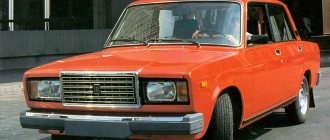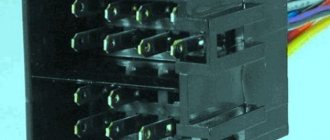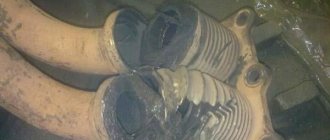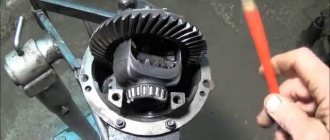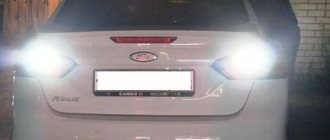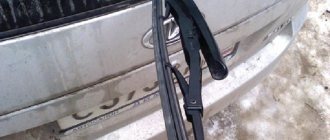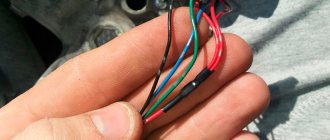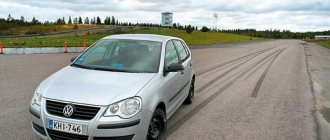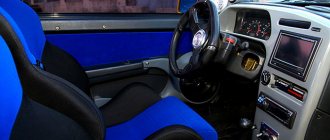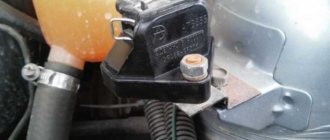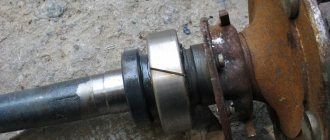Car manufacturers are constantly improving the performance of their products. Equipment is becoming more reliable, more functional and more economical to maintain. At the same time, special developments are appearing that improve the ergonomics of using the vehicle. In this regard, rear view cameras with parking lines deserve attention, which not only facilitate the driver’s tasks, but also increase the overall level of safety. Such equipment will be useful not only for beginners who have just passed their license, but also for experienced drivers who, due to certain external factors, may be forced to turn to an electronic assistant for help.
What is the function of parking lines?
Traditional models of the first generation of rear-view cameras did not have this option, broadcasting a “pure” video stream through the display in standard mode. Modern versions are capable of applying graphic contours to the transmitted image. Depending on the specific design, this may be a pair of contours or an extensive grid over the entire area. In both cases, the task is the same - to help the driver navigate the target space and calculate the distance to the nearest objects. Also, some rear view cameras with dynamic parking lines provide the ability to synchronize with navigators, which expands the functionality of both devices.
Setting up markup
Many car head units, radios, and recorders allow you to customize markings using built-in software algorithms. To do this, you usually need to enter the service menu of the car radio or standard control unit.
It also happens that the driver uses a configured camera with an adjusted reticle, but after repairing or servicing the car, the calibration disappears. This is usually due to the on-board power being turned off for some time (for example, when replacing the battery or temporarily disconnecting the power wires). In this case, you will need to reconfigure the markup. After this you can use it as before.
Setting options may vary significantly depending on the make and model of the car, head unit, and radio. Therefore, we will describe in general terms one of the common algorithms. We will need a wooden block 2 meters long.
We place the beam at a distance of exactly 1 meter from the rear bumper. An important point is that it should be placed symmetrically relative to the sides of the car. The middle of the block should be exactly opposite the center of the bumper.
After that, go to the service menu. Here, different brands may have completely different sequences of actions. For example, on Toyota cars you will need to press the G key on the radio. While holding the button, you should blink the dimensions three times. After this, the service menu is activated. Next we need to go to the camera section, if necessary, select the car model, year of manufacture, and equipment.
Turning on the camera, we will see a picture on the screen along with a block placed on the ground. Now you need to first turn the steering wheel all the way to the left, then to the right (this is done to set up the dynamic marking functionality). After that, click on the large plate on the right.
The display will now show a green outline around the wooden block. Using the position keys, we need to adjust this rectangle so that the block is exactly inside it. That's it, now the functionality is fully adjusted, all that remains is to save the settings by pressing the appropriate key. After this, you can confidently use the rear view camera in the parking lot.
Note that the described algorithm is not suitable for all cars (radio tape recorders, monitors), but in general terms it is used in most cases. For example, often instead of one cross bar at the back of the bumper you need to put two guides. A number of models use a special stencil for calibration.
Main characteristics of devices
In the operation of such equipment, optics are extremely important. Experts recommend giving preference to cameras with HCCD matrices, which are distinguished by high-quality “pictures” and small sizes. The more detailed the image, the larger the screen on which it is displayed should be. Models with resolutions of 510 x 492 and 720 x 480 are considered standard. But there is no point in purchasing a display that is too massive, since large equipment on the dashboard interferes with natural visibility. In addition, rear view cameras with parking lines can have different coverage angles. It varies on average from 120 to 170 degrees. On the one hand, increased visibility is a plus, since the car owner controls a larger area. But almost always such models are inferior to analogues with a smaller angle in terms of image quality - detail and clarity suffer, which is especially evident in the evening and at night.
What's better
If we compare a camera with dynamic lines with a parking sensor system, it will demonstrate the following advantages:
- When using the device, you can independently monitor what is happening behind the car. Moreover, modern models do this in high resolution. The work of the parking sensors consists only of notifying the driver of approaching an obstacle using a characteristic sound.
- Ability to interact with any displays and multimedia systems on the dashboard. This feature reduces the cost of installing the system and related components.
- Parking sensors operate on the basis of sound waves, so they are not able to respond to small or thin obstacles and sloped surfaces.
- Installing the camera does not require much effort, because... Picture transmission can even be done wirelessly. And in order to install a parking sensor system, sometimes you have to dismantle important components of the car.
But parking sensors have such advantages as the ability to work in the dark. When using a camera with dynamic markings, you have to protect it from dirt, otherwise the image quality will be lost. The most optimal solution is to install both a camera and parking sensors. This will allow you to combine the advantages of both systems and get the maximum benefit from them.
Types of equipment
The segment distinguishes between universal, standard and mortise camera models. They do not always have obvious operational differences, but in the structural design the difference is quite noticeable. As for universal models, their technical parameters are oriented towards installation in almost any car - on the bumper, body parts, license plate equipment, etc. However, when choosing such a device, you will have to accept that the camera will be visible to everyone around you. In turn, standard rear view cameras with parking lines are initially focused on integration in a specific car. For them, the manufacturer provides a special place in the license plate area. But after installation, the camera will be barely noticeable. Mortise devices combine the advantages of universal and standard devices. On the one hand, they are securely hidden in the body structure, and on the other hand, they are suitable for a wide range of cars. But to install a camera of this type, installation work will be required.
Types of devices
First of all, the division of models is carried out by the number of sensors. Nowadays modifications are made for 2, 4 and 6 sensors. On average, the angle of detection of objects does not exceed 140 degrees. Cameras are manufactured with low or high resolution. If we consider expensive models, then their specified parameter fluctuates around 600 by 480 pixels. The cameras are also divided according to the type of installation. Some modifications are mounted on the car panel. However, there are compact devices built into the rearview mirror.
Features of wireless systems
The classic method of transmitting a signal between on-board automotive electronics components involves using the local power grid. This may be standard fittings, but it is most often connected to central power supply lines. To save motorists from painstaking cable installation, manufacturers began to develop wireless rear view cameras with parking lines with a monitor to which a radio signal is transmitted. To organize the infrastructure of this connection, the installation of transmitter and receiver modules is required. That is, the video signal will be sent wirelessly from the camera to the main unit of the parking system. The concept is easy to install and operate, but it has two drawbacks: unstable broadcasting in conditions of strong interference and a limited coverage area (10-15 m).
Globex CM12U
This camera comes with two sensors. The sensor of this model is of a built-in type. The resolution is 560 by 470 pixels. The minimum permissible chamber temperature is -13 degrees. If you believe consumer reviews, the model is very afraid of humidity.
It does not have an all-round viewing system. According to the documentation, the degree of protection is provided for the IP30 marking. The central unit is not afraid of direct sunlight. The camera has a DVR function. The presented camera will cost from 15 thousand rubles.
Installation operations and equipment connection
The installation method will depend on the type of camera. There are two fundamentally different options: surface-mounted and mortise. In the first case, using the supplied adhesive clamps, the device is simply applied to the target surface, after which auxiliary external holders can be used. It is advisable to use the mortise type of installation if the rear view camera connection is wired. Creating a hole in this situation fulfills the task of installing the device and will provide access to the on-board network. The camera itself is fixed in a special seal and clamped into the prepared socket.
Static parking lines - the usual position of the picture in the form of stripes.
Static parking lines - the usual position of the picture in the form of stripes.
The display, according to the color parameters of the lines, can be anything. Any camera manufacturer or factory can easily do this. It all depends on the imagination of the manufacturer or his special skills.
This static marking allows you to navigate the distance from an obstacle to the car when reversing, and the offset marking remains in place (i.e. static).
Model AVIS AVS311CPR
According to reviews, this is one of the most reliable and durable systems, which is not surprising, since the design is based on a metal body. The camera itself also assumes the use of protected installation locations - for example, in the license plate frame. During operation, it will be possible to change the angle of the lens depending on the area of interest. Although this feature may not be required, since the viewing angle is already 170 degrees. Like other rear view cameras with parking lines from the AVIS family, this version allows you to broadcast both direct and mirror images. Signal reception is carried out by a display with a resolution of 510 x 492.
How does it work
Before purchasing a camera for a vehicle, you need to evaluate how it works and its advantages. There are two types of such devices: with dynamic markings and static ones.
With dynamic markup
Models with dynamic markings are capable of displaying on the screen not only a picture of what is happening, but also special markings. Dynamic lines in the camera provide maximum comfort when parking your car by accurately showing the distance between the vehicle and the obstacle.
Devices operating on this principle are fixed to the rear bumper or near the license plate.
Data transmission from the source to the display is carried out via a video cable or radio communication (depending on the features of the model).
When choosing a suitable device, you need to consider the following nuances:
- Device form. This characteristic determines the specifics of installing the camera on a car. The universal model is equipped with special fasteners.
- Viewing angle. In order to effectively assess the situation in the “dead zone”, i.e. behind the car, you need to choose cameras with a wide viewing angle. But if it is too large, a lot of unnecessary information will enter the lens, making it difficult to focus on key objects.
- Chroma. The camera models available on the market work in color or black and white.
- Night mode support.
- Camera resolution.
- Build quality and case material.
- Supports parking marking function.
With static markup
The static markings of the rear view camera are graphic lines that are superimposed on the overall image and do not change their position during parking.
Model Blackview VPF 2.1
This model is also built into the supporting structure of the license plate. During operation, the lens is protected from dirt and mechanical influences. Features of the device include the presence of two sensors, which are located on the sides of the camera. They allow you to record the distance to surrounding objects. However, the detection distance is small and is only 20-30 cm. Like the best rear view cameras with parking lines, this version is equipped with a beeper. This functional component provides the possibility of a sound warning if the system scanning the distance has detected a critical approach. Also, the advantages of the solution from Blackview include a solid 720 x 480 format screen and a wide range of operating temperatures.
Model AutoExpert VC-216
This model is mainly preferred by car owners who want a simple and low-cost means to facilitate the parking process. The device is easily mounted using two lugs. Then all that remains is to point the camera at an advantageous area and connect it to the central panel. Despite the budget class, this version provides a wide viewing angle of 170 degrees and produces a detailed image. Also in terms of design, rear view cameras with parking lines from AutoExpert are rarely criticized by users. The element base and assembly of devices are made at a high quality level.
Globex CM10U
This camera is available on the market with two high sensitivity sensors. The horizontal angle of object detection is 145 degrees. In parking mode, the camera consumes little power. It is also important to note that the operating voltage of the system is 15 V. The device has a total of two USB connectors. It has a slot for an external drive. The model's sensor is 1.2 inches. The model currently costs about 13,500 rubles.
How to choose the best option?
If it is possible to integrate a standard model, then it would not be a bad idea to prefer this option as the most suitable for installation. Mortise devices, with all their advantages, imply a violation of the structure, and this is best avoided. As for universal rear view cameras with parking lines, this choice should be made if the device is assigned an auxiliary function. For example, if a set with sensors acts as the main assistant in the parking process.
Wireless communication causes mixed opinions among many users, but they all boil down to the fact that in order to ensure signal reliability, it is worth initially considering a wired connection scheme. In terms of key performance indicators, it is advisable to focus on your own needs, taking into account the operating conditions of the machine and the level of driving skills of the user.
Let me start by saying that I am sick of these Chinese cameras. The first one broke, the second one too. I broke the third one during installation and then I got sick of everything. I decided not to order them from China anymore and buy them here. On Alexey’s advice given in passing, I bought myself an AVIS camera, but not a simple one, but with dynamic lines
